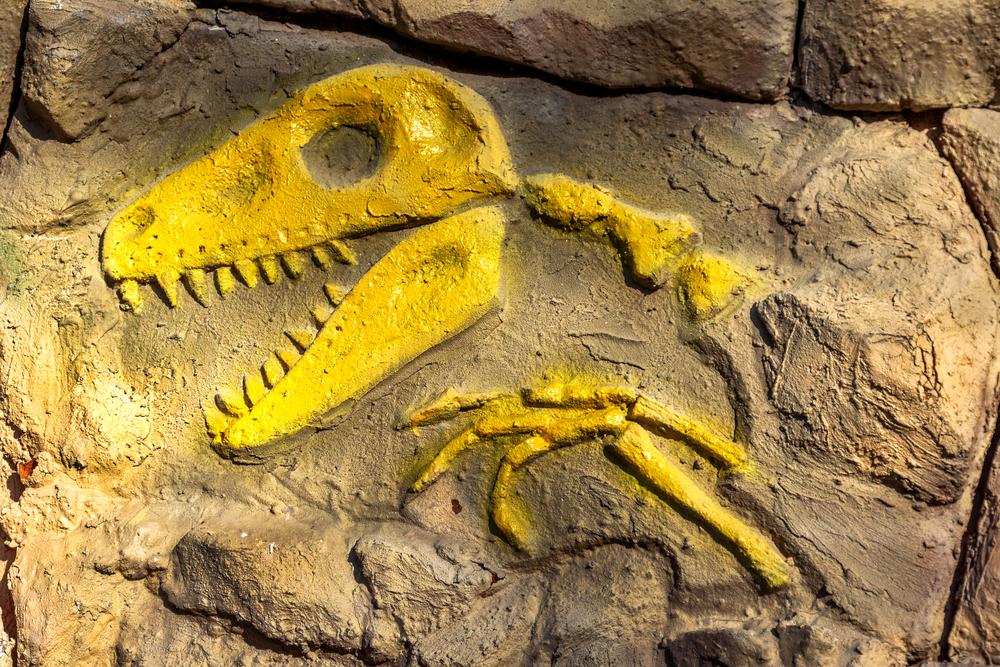Describe How an Organism Becomes a Fossil
The gazelle population becomes faster over time. When the organism dies the supply stops and the carbon-14 contained in the organism begins to spontaneously decay into nitrogen-14.

How Fossilization Creates Fossils Read Earth Science Ck 12 Foundation
The median plane which divides the body into left and right.
. At the end of its path the neutron is captured by a nucleus in an nγ-reaction that leads to the emission of a neutron capture photon. The structure of any respiratory. Cheetahs invade a new habitat chasing down gazelles that live there.
The frontal plane also called the coronal plane which divides the body into front and back. Such photons always have enough energy to qualify as ionizing. The future of the biosphere will depend on how people interact with other living things within the zone of life.
Divide students evenly into 7 groups and distribute the appropriate role-play card to each group. Describe two ways that humans interfere with the natural carbon cycle. Oxygen levels decrease and carbon dioxide levels increase when people clear forests or burn fossil fuels such as coal and oil.
It includes the study of how an organism becomes a fossil. It is elementary that cooperative behaviour carries costs and risks precisely as Hardin indicated. Taphonomy is extremely important in biological anthropology especially in subdisciplines like bioarchaeology study of human remains in the archaeological record and zooarchaeology the study of faunal.
Fossilization is a very rare process and of all the organisms that have lived on Earth only a tiny percentage of them ever become fossils. The sagittal planes which are parallel to the median plane. Give an example of each.
Describe what makes a carbon sink and what makes a carbon source. By measuring the amount of carbon-14 remaining scientists can pinpoint the exact date of the organisms death. Most of its body is quickly eaten by scavengers and the remaining flesh is soon eaten by insects and.
The table provided at the end of the lesson plan summarizes all the groups their options for carbon flow the explanation for. Describe one way that carbon can be stored for a short time in the natural cycle. This passes through the head spinal cord navel and in many animals the tail.
The time it takes for one-half of the carbon-14 to decay a period called a half-life is 5730 years. The population of reef fish becomes more heat tolerant over time. Anatomical terms describe structures with relation to four main anatomical planes.
Scientists describe the Earth in terms of spheres. The generic term photon is used to describe both. The information below was adapted from OpenStax Biology 392.
A farmer takes seeds only from his biggest strawberries to plant the next season. If an organism becomes adapted to the Arctic cold for instance then it may have given up survival options suitable to warmer weather. To see why imagine an antelope that dies on the African plain.
Gas Exchange across Respiratory Surfaces. Climate change warms a coral reef. There are also opportunity costs.
The strawberries on his farm become. Describe the reversible binding of O2 to hemoglobin dissociation curves Predict the effects of pH temperature and CO2 concentrations on hemoglobin affinity for O2. Describe two ways that carbon can be stored for a very long time in the natural cycle.
Each group will be a team of actors that will play a certain part of the carbon cycle atmosphere water algae marine snail sediments rocks trees or caterpillars. A neutron collides with a proton of the target material and then becomes a fast recoil proton that ionizes in turn. The process of a once living organism becoming a fossil is called fossilization.
For instance if the organism shares some of its resources with others it will have less for itself and it opens itself. However as youll see throughout this book the majority of organisms never make it through the full fossilization process. In the early 1970s the United.
Oil spills and industrial wastes threaten life in the hydrosphere. The information below was adapted from OpenStax Biology 390.


No comments for "Describe How an Organism Becomes a Fossil"
Post a Comment